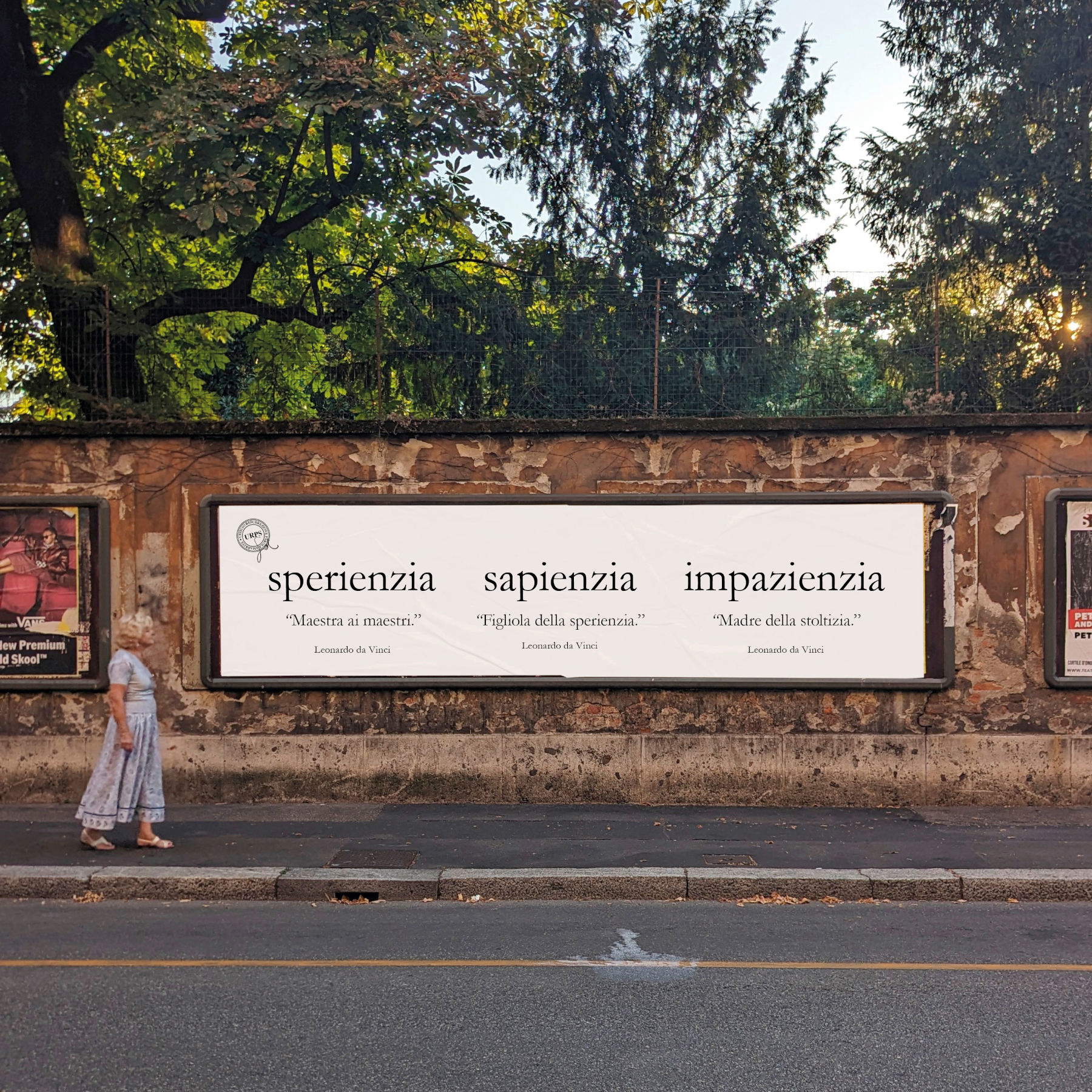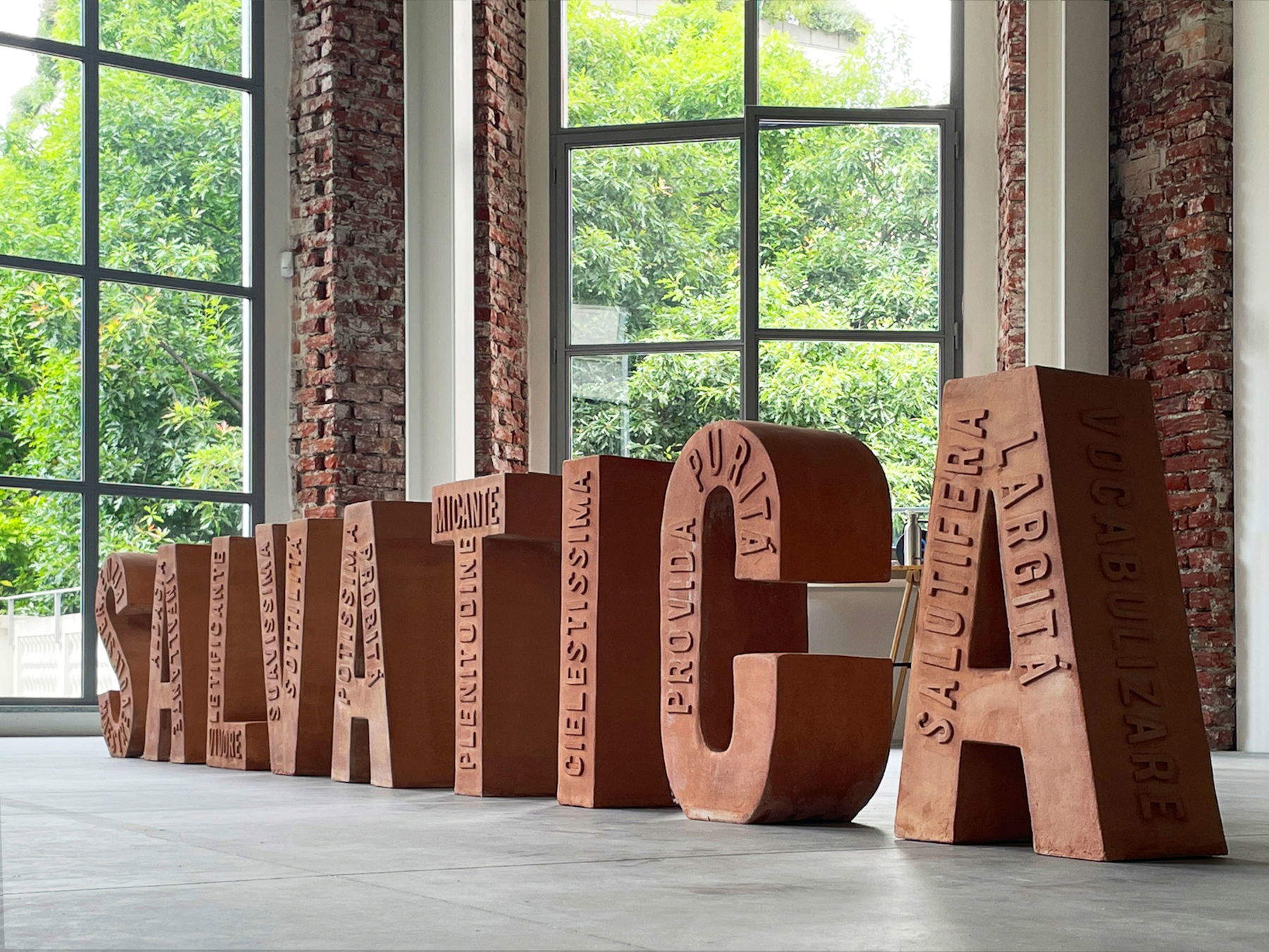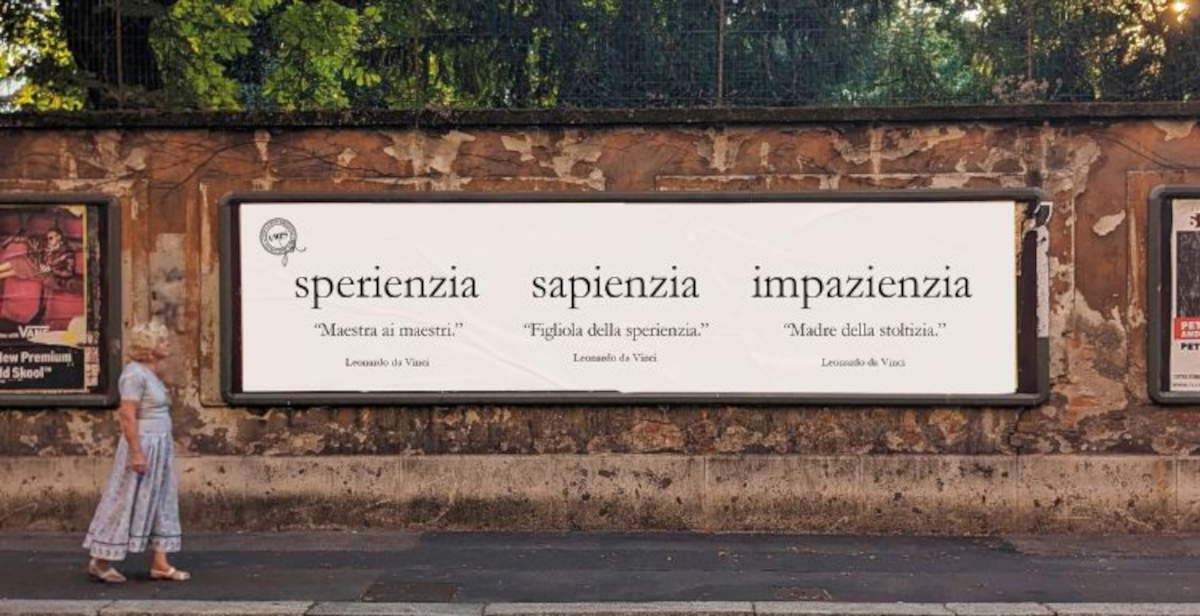From Nov. 1, 2025 to Jan. 31, 2026, Milan will host Leonardo Parlante, the exhibition conceived and curated by Sabrina D’Alessandro that brings to light one of the lesser-known aspects of the Renaissance genius: his interest in words, at the Castello Sforzesco. The project, developed through the URPS - Ufficio Resurrezione Parole Smarrite initiative, traces Leonardo’s lexicographic work, particularly the annotations collected in the Trivulziano Codex 2162. During his time in Milan, Leonardo transcribed some eight thousand terms into long lists, a work aimed at expanding his vocabulary and preserving words otherwise destined for oblivion.
The Codex Trivulzianus, preserved at the Civic Historical Archives and Trivulziana Library of the Castello Sforzesco, becomes the starting point for an unprecedented research between visual art and linguistics. Leonardo’s words, often lexical rarities or Latinisms such as merore, vivore, salvatico and plenitude, are transformed by D’Alessandro into physical objects and urban posters, restoring to the city a dimension of living and accessible words. In this sense, Milan is transformed into a large open book, in which Leonardian vocabulary and concepts dialogue with urban space and collective memory.

The installations in the courtyards of the Castello Sforzesco, particularly in the Cortile delle Armi and the Corte Ducale, constitute the central component of the exhibition. Salvatica, made of terracotta, takes its name from a word in the Trivulziano Codex that Leonardo used with a double meaning: literally meaning “wild” or “sylvan,” but in the annotations of the Renaissance genius it also takes on the meaning of that which is saved. The sculpture holds within it other lost words, symbolically making them “salvation.” The terms are combined in pairs, placed on the front and back of the sculpture, and reflect qualities, flaws, attitudes and ethical reflections typical of Leonardo’s thought, traceable in his fables, bestiaries and prophecies.
In the Corte Ducale, the installations Vanagroria and Purità dialogue with each other inside the pool. The first, made of mirror-polished steel, appears as a slender play of reflections and references, recalling illusion and vanity destined to dissolve. The second, made of terracotta, evokes the nobility and purity of elephants, animals that, according to Leonardo, immerse themselves in water to purify themselves. The contrast between the two works offers a visual reflection on ephemeral lightness and moral solidity, recurring themes in the master’s manuscripts and notes.
Parallel to the installations in the Castello, the exhibition extends to the urban fabric of Milan through a system of public posters. Selected words from the Codex Trivulzianus are presented with quotations from other Leonardo manuscripts, constructing narrative paths that illustrate their sonority, meaning and function. The city thus becomes a great philosophical and visual text in which citizens can engage with concepts related to knowledge, experience, life, and freedom. The adjective infallant is related to Leonardo’s maxim “Rare falls those who walk well,” while plenitude recalls the poetic fragment “When the lover has come to the beloved, there he rests,” suggesting how Leonardo’s linguistic research was also linked to reflections on human experience and emotions.

The creation of the exhibition is the result of extensive preliminary work. D’Alessandro conducted a punctual research on the significance of the terms annotated by Leonardo in the Codex Trivulzianus, comparing them with other sources and manuscripts, in order to restore their original meaning and possible interpretations. The project has won recognition in the cultural and artistic spheres: in 2024 D’Alessandro won the public call AAA - Atelier Aperti per Artista from Casa degli Artisti in Milan, which allowed her to develop the creative residency underlying the exhibition. The artist’s research has also received international attention, with the acquisition of the Fotopiuvoli Trivulziani series by MUNAF - National Museum of Photography and with exhibitions planned at the Italian Cultural Institute in Oslo on the occasion of the XXV Week of the Italian Language in the World. From September 2025 to February 2026, the artist is also featured in the exhibition Scrittura Obliqua hosted by MUNAF.
The installations inside the Castello Sforzesco are open to the public with free admission daily from 7 a.m. to 7:30 p.m. The exhibition will be officially presented on Thursday, Nov. 13 at 5 p.m. in the Weil Weiss Room, Castello Sforzesco, during BookCity. The Leonardo Parlante project is realized in collaboration with Casa degli Artisti in Milan, coordinated by Lorenzo Vatalaro. The contribution of Fondazione Cariplo made possible the production of the works, while the installations were made with the support of Palazzi Cieloterra and Ferro Design Milano.
Sabrina D’Alessandro, born in Milan in 1975, conducts research focused on the relationship between word and imaginary, interweaving linguistics and visual art. In 2009, she founded URPS - Ufficio Resurrezione Parole Smarrite, a project dedicated to the recovery of words that have fallen into disuse but are considered precious for everyday life. The Office’s activity consists of identifying and returning rare or unusual words to memory, transforming them into books, sculptures, installations, videos and artistic actions.
D’Alessandro’s word-works have been exhibited in numerous museums and cultural spaces in Italy and abroad, including Fondazione Mudima and MUNAF - National Museum of Photography in Milan, CAMeC Museum in La Spezia, Santa Maria della Scala Museum in Siena, Premio Suzzara Museum, Art Sonje Center in Seoul, Centre for Contemporary Art Bikaner House in New Delhi, The Art House in Singapore, Henry P. Davison House in New York and the Italian Embassy in Vilnius. His work has also received attention from the Treccani Encyclopedia, which has dedicated articles and in-depth articles to him.
Notable public installations include the Redamare monument on the La Spezia waterfront, which restores the otherwise lost word “to love and be loved” to the community. For Rizzoli he has published Il Libro delle Parole Altrimenti Smarrite (2011) and Accendipensieri (2021), volumes that collect most of the words he has rediscovered over the years and that form the core of his visual art works.
 |
| Leonardo's "lost" words become an installation: the work of Sabrina D'Alessandro |
Warning: the translation into English of the original Italian article was created using automatic tools. We undertake to review all articles, but we do not guarantee the total absence of inaccuracies in the translation due to the program. You can find the original by clicking on the ITA button. If you find any mistake,please contact us.